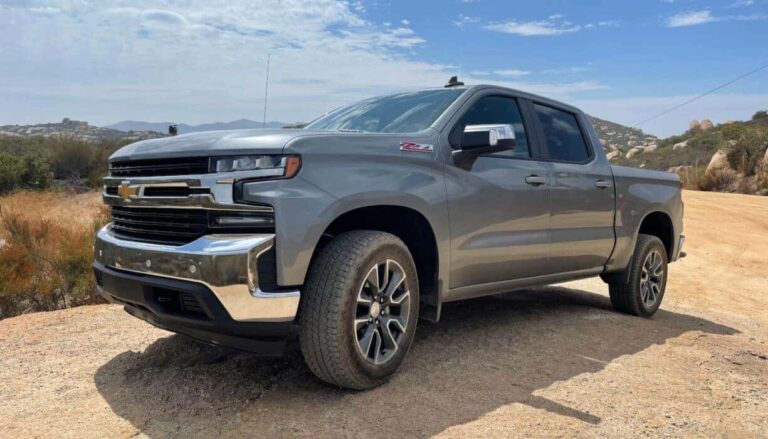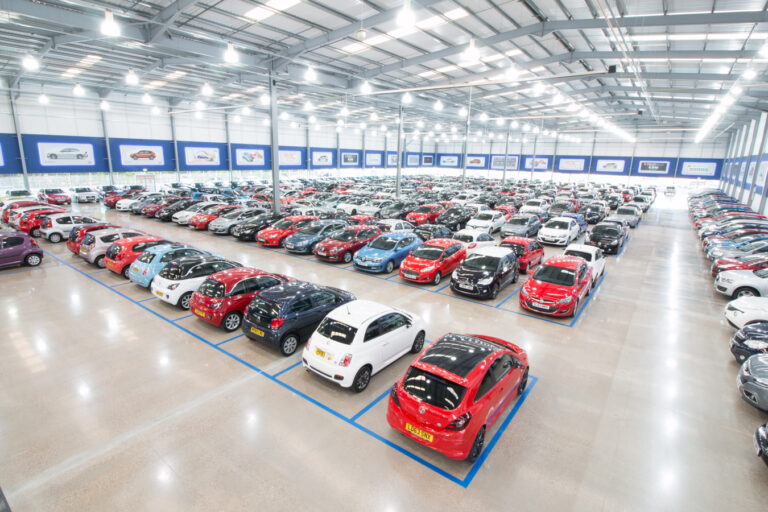Self-Driving Car Brands: Navigating the Future of Autonomous Mobility
Self-Driving Car Brands: Navigating the Future of Autonomous Mobility cars.truckstrend.com
The idea of a car driving itself, once confined to the realms of science fiction, is rapidly becoming a tangible reality. Self-driving cars, also known as autonomous vehicles (AVs), represent one of the most profound technological shifts in transportation history. Far from a singular invention, the development of these vehicles is a complex tapestry woven by numerous companies – from venerable automotive giants to agile tech startups – each bringing their unique vision, technology, and brand identity to the forefront. Understanding these "Self Driving Car Brands" is crucial to grasping the current state and future trajectory of autonomous mobility.
This article delves into the diverse landscape of companies leading the charge in autonomous driving. We will explore the different approaches, key technologies, and the challenges and opportunities that define this groundbreaking industry, offering a comprehensive guide to the brands shaping our future on the road.
Self-Driving Car Brands: Navigating the Future of Autonomous Mobility
Understanding Autonomy: The SAE Levels
Before diving into specific brands, it’s essential to understand the standardized classification of vehicle automation developed by the Society of Automotive Engineers (SAE International). These levels provide a clear framework for discussing the capabilities of self-driving systems:
- Level 0: No Automation – The human driver does everything.
- Level 1: Driver Assistance – The vehicle assists with steering or braking/acceleration (e.g., adaptive cruise control).
- Level 2: Partial Automation – The vehicle can control both steering and braking/acceleration simultaneously, but the human driver must constantly supervise and be ready to intervene (e.g., Tesla Autopilot, Ford BlueCruise).
- Level 3: Conditional Automation – The vehicle can perform all driving tasks under specific conditions, and the human driver does not need to monitor constantly but must be ready to intervene when prompted (e.g., Mercedes-Benz DRIVE PILOT).
- Level 4: High Automation – The vehicle can perform all driving tasks and monitor the driving environment under specific conditions (e.g., within a geofenced area, specific weather). The human driver is not required to intervene.
- Level 5: Full Automation – The vehicle can perform all driving tasks under all conditions. No human intervention is ever required.

Currently, most consumer vehicles offer Level 2 features, while Level 3 is slowly emerging in limited markets. Levels 4 and 5 are primarily the domain of robotaxi services and commercial pilots, not widely available for private purchase.
Leading Self-Driving Car Brands and Their Approaches
The landscape of self-driving car brands is diverse, comprising traditional automakers, dedicated tech companies, and strategic partnerships. Each brings a unique philosophy and business model to the table.
1. Traditional Automakers Embracing Autonomy
These companies leverage their extensive manufacturing capabilities and market presence, integrating autonomous technology into their established vehicle lines or creating dedicated autonomous divisions.
- Tesla: Perhaps the most publicly visible brand in the autonomous space, Tesla’s "Autopilot" and "Full Self-Driving (FSD) Beta" features have garnered significant attention. Their approach heavily relies on cameras ("vision-only") and neural networks, with over-the-air (OTA) updates continuously improving their system. While Tesla markets FSD as "full self-driving," it currently operates as a sophisticated Level 2 system requiring constant driver supervision. Their brand promise revolves around a future where cars can truly drive themselves, accessible directly to consumers.
- General Motors (GM) – Cruise: GM has taken a different route, establishing Cruise as a dedicated Level 4 autonomous vehicle company. Cruise focuses on developing and deploying robotaxi services in geofenced urban areas (e.g., San Francisco, Austin). Their vehicles are purpose-built for autonomous operation, equipped with a comprehensive sensor suite including LiDAR, radar, and cameras. GM’s strategy is to be a leader in Mobility-as-a-Service (MaaS) rather than primarily selling self-driving consumer cars.
- Mercedes-Benz – DRIVE PILOT: Mercedes-Benz has achieved a significant milestone by being the first automaker to receive regulatory approval for a Level 3 system, "DRIVE PILOT," in specific markets (e.g., Germany, Nevada). This system allows drivers to legally disengage from driving tasks under certain conditions (e.g., heavy traffic on divided highways at speeds up to 40 mph). This cautious, regulation-first approach positions Mercedes-Benz as a pioneer in bringing conditional autonomy to luxury consumers.
- Ford – BlueCruise: Ford’s "BlueCruise" is a Level 2 hands-free driving system for divided highways, similar to GM’s Super Cruise. While Ford previously invested heavily in Argo AI for Level 4 development (which has since shut down), their current focus is on enhancing consumer-facing ADAS features and exploring future L4 applications through in-house development and new partnerships.
- BMW: BMW is also actively developing Level 3 and Level 4 autonomous driving capabilities, often through collaborations with tech partners. Their strategy emphasizes a modular, scalable architecture to integrate advanced autonomous features across their luxury vehicle lineup.
- Volvo/Polestar – Zenseact: Known for its safety heritage, Volvo (and its electric performance brand Polestar) is committed to autonomous driving. They have a dedicated software company, Zenseact, and partner with LiDAR specialists like Luminar to develop advanced L3/L4 capabilities, prioritizing safety and reliability.
2. Dedicated Autonomous Technology Companies
These companies often started as pure tech ventures, developing the core software and hardware for autonomous driving, and frequently partner with traditional automakers or operate their own fleets.
- Waymo (Alphabet Inc.): A pioneer in autonomous driving, Waymo (formerly the Google self-driving car project) is widely considered a leader in Level 4 autonomy. They operate extensive robotaxi services in Phoenix, San Francisco, and Los Angeles, using a multi-sensor approach (LiDAR, radar, cameras). Waymo focuses on a robust, highly tested system for specific operational design domains, aiming for scalable commercial deployment.
- Mobileye (Intel): While not a car brand in itself, Mobileye is a critical supplier of advanced driver-assistance systems (ADAS) and autonomous driving technology to numerous automakers globally. Their vision-centric technology and mapping solutions are integral to many L1-L3 systems and are being developed for full L4/L5 autonomy. They are a foundational brand in the self-driving ecosystem.
- Baidu (Apollo): China’s equivalent of Waymo, Baidu’s "Apollo" platform is a leading open-source autonomous driving ecosystem. Baidu operates "Apollo Go," a robotaxi service in multiple Chinese cities, showcasing Level 4 capabilities. Their strategy involves both self-development and extensive partnerships with domestic and international car manufacturers.
- Aurora: Focused on autonomous trucking and ride-hailing, Aurora acquired Uber’s ATG (Advanced Technologies Group) and has partnerships with truck manufacturers like PACCAR and Volvo. Their "Aurora Driver" is a comprehensive self-driving system designed for various vehicle types and use cases, aiming for Level 4.
- Zoox (Amazon): Acquired by Amazon, Zoox is developing a purpose-built, bidirectional, fully electric autonomous robotaxi designed for dense urban environments. Their unique vehicle design, without a steering wheel or pedals, signals a clear intent for a Level 4/5 dedicated ride-hailing service.
Key Technologies Powering Self-Driving Cars
The ability of these brands to deliver autonomous driving hinges on the sophisticated integration of several core technologies:
- Sensors: The "eyes and ears" of the autonomous car. This includes cameras (for visual perception and object recognition), LiDAR (Light Detection and Ranging, for precise 3D mapping and object detection), Radar (for detecting distance and velocity, especially in adverse weather), and Ultrasonic sensors (for short-range detection, like parking).
- High-Definition Mapping: Detailed, continuously updated maps that include lane markings, traffic signs, road geometry, and even temporary construction zones are crucial for AVs to navigate safely and efficiently.
- Artificial Intelligence (AI) and Machine Learning (ML): The "brain" of the system. AI algorithms process sensor data to perceive the environment, predict the behavior of other road users, and plan the vehicle’s trajectory in real-time. Deep learning is particularly vital for perception tasks.
- Powerful Computing Platforms: Running complex AI models and processing vast amounts of sensor data in real-time requires significant computational power, often from specialized chips and dedicated onboard computers.
- Connectivity (V2X): Vehicle-to-everything communication, allowing cars to communicate with each other (V2V), infrastructure (V2I), and even pedestrians (V2P), enhancing awareness and safety.
Benefits and Challenges of Self-Driving Cars
The promise of autonomous vehicles is immense, but so are the hurdles.
Benefits:
- Enhanced Safety: Eliminating human error (distraction, fatigue, impairment) could drastically reduce accidents and fatalities.
- Reduced Traffic Congestion: Optimized traffic flow, smoother driving, and potential for shared mobility can ease congestion.
- Increased Accessibility: Providing mobility to the elderly, disabled, and those unable to drive.
- Improved Productivity: Passengers can work, relax, or engage in other activities during commutes.
- Environmental Benefits: More efficient driving patterns and the proliferation of electric AVs can reduce emissions.
Challenges:
- Technological Hurdles: Handling "edge cases" (unusual or rare driving scenarios), adverse weather conditions, and unexpected human behavior remains complex.
- Regulatory and Legal Frameworks: Developing consistent laws for testing, deployment, and liability across different regions is a massive undertaking.
- Public Acceptance and Trust: Overcoming skepticism and building public confidence in the safety and reliability of AVs.
- Cybersecurity Risks: Protecting AVs from hacking and malicious attacks is paramount.
- Ethical Dilemmas: Programming vehicles to make difficult decisions in unavoidable accident scenarios.
- High Development Costs: The immense investment required for R&D, testing, and infrastructure.
Important Considerations for Consumers and the Industry
For consumers, it’s vital to differentiate between advanced driver-assistance systems (ADAS) and true self-driving capabilities. While Level 2 systems offer impressive convenience, they are assistance systems, not replacements for human drivers. Always remain attentive and ready to take control.
For the industry, the path to widespread Level 4 and 5 autonomy will likely be gradual, starting with specific use cases like robotaxis and commercial logistics in controlled environments. Partnerships, regulatory collaboration, and a relentless focus on safety will be key to success.
Practical Advice and Actionable Insights
- For Consumers:
- Educate Yourself: Understand the SAE levels and the actual capabilities of the ADAS features in your vehicle. Don’t confuse "Full Self-Driving" marketing with fully autonomous operation.
- Stay Engaged: If you own a vehicle with Level 2 features, remember you are still the primary driver. Keep your hands on the wheel (or ready to take over) and your eyes on the road.
- Experience Robotaxis: If available in your city, try a Waymo or Cruise ride to experience Level 4 autonomy firsthand in a controlled setting. This is currently the closest most consumers will get to "self-driving."
- Prioritize Safety Features: When buying a new car, look for robust ADAS packages (adaptive cruise control, lane-keeping assist, automatic emergency braking) as these genuinely enhance safety today.
- For Industry Stakeholders & Investors:
- Long-Term Vision: Autonomous driving is a marathon, not a sprint. Be prepared for sustained investment and phased rollouts.
- Strategic Partnerships: Collaboration between tech companies and traditional automakers is often more effective than going it alone, combining innovation with manufacturing prowess.
- Focus on Niche Applications: Initial commercial success is more likely in specific domains like ride-hailing or logistics within geofenced areas, rather than immediate universal consumer adoption.
Table of Leading Self-Driving Car Brands/Companies
Here’s a snapshot of key players, their primary focus, and how their services or products are typically accessed:
| Brand/Company | Key Focus/Business Model | Autonomy Level Focus | Consumer Availability (as of today) | Key Features/Approach |
|---|---|---|---|---|
| Waymo (Alphabet) | Robotaxi Service (ride-hailing) | Level 4/5 | Limited cities (Phoenix, SF, LA) via app-based service. No direct car purchase. | Multi-sensor suite (LiDAR, radar, camera), extensive testing, purpose-built vehicles. |
| Cruise (GM) | Robotaxi Service (ride-hailing) | Level 4/5 | Limited cities (SF, Austin, Phoenix) via app-based service. No direct car purchase. | Dedicated autonomous fleet, focus on complex urban environments. |
| Tesla | Consumer Vehicles (ADAS) | Level 2 (FSD Beta aims L3+) | Yes, via purchase of a Tesla vehicle + "Full Self-Driving" (FSD) package (premium add-on). | Vision-only approach, AI-driven, frequent over-the-air (OTA) updates. |
| Mercedes-Benz | Luxury Consumer Vehicles (ADAS) | Level 2 (DRIVE PILOT L3) | Yes, L2 standard in many models. L3 (DRIVE PILOT) available in select S-Class/EQS models in specific regulated markets (e.g., Germany, Nevada) as a premium option. | First to market with a certified Level 3 system for conditional hands-off driving. |
| Ford | Consumer Vehicles (ADAS) | Level 2+ | Yes, via "BlueCruise" feature on compatible Ford/Lincoln vehicles (often subscription-based or included in trims). | Hands-free highway driving on pre-mapped roads. |
| Mobileye (Intel) | ADAS/AV Technology Supplier | Level 2-5 (platform) | Indirectly, as a component in many car brands’ ADAS systems. | Computer vision, crowd-sourced mapping (REM), supplier of chips and software. |
| Baidu (Apollo) | Robotaxi Service, Autonomous Driving Platform | Level 4/5 | Limited cities in China via "Apollo Go" robotaxi service. | Open platform, extensive fleet, strong focus on the Chinese market. |
| Aurora | Autonomous Trucking & Ride-Hailing Technology Supplier | Level 4 | Commercial pilots for trucking and ride-hailing partners. No direct consumer. | Integrated hardware/software "Aurora Driver" designed for multiple vehicle types. |
| Zoox (Amazon) | Purpose-Built Robotaxi Service | Level 4 | Limited internal testing and employee service (Las Vegas, SF). No consumer. | Bidirectional, no steering wheel/pedals, designed for dense urban mobility. |
Note on "Price": For Level 4/5 services, the "price" is effectively the cost of a ride, similar to a traditional taxi or ride-share. For Level 2/3 systems, the "price" is usually the cost of the vehicle plus an optional package or subscription fee for the advanced features.
Frequently Asked Questions (FAQ)
Q1: What is the difference between ADAS (Advanced Driver-Assistance Systems) and self-driving cars?
A1: ADAS refers to Level 1 and Level 2 features that assist the human driver (e.g., adaptive cruise control, lane-keeping assist). Self-driving cars, by definition, imply Level 3 or higher, where the vehicle can take over more or all driving tasks under certain conditions, reducing or eliminating the need for constant human supervision.
Q2: Are self-driving cars legal to drive everywhere today?
A2: No. The legality varies significantly by country, state, and even city. While Level 2 ADAS features are generally legal, Level 3 systems are approved only in very specific regions and conditions (e.g., Mercedes-Benz DRIVE PILOT). Level 4 robotaxis operate with special permits in limited geofenced areas. Level 5 is not yet commercially available anywhere.
Q3: When will fully self-driving (Level 5) cars be available for everyone to buy?
A3: Experts widely agree that widespread Level 5 autonomy for personal ownership is still decades away. The complexity of handling every possible driving scenario in all conditions is immense. The first applications will continue to be in controlled environments like robotaxi services or commercial logistics.
Q4: Are self-driving cars safer than human drivers?
A4: Data from companies like Waymo and Cruise suggests their autonomous vehicles have significantly lower accident rates per mile compared to human drivers, particularly in terms of severity. However, the data is still growing, and direct comparisons are complex due to different operating environments and testing methodologies. The goal is to make them substantially safer by eliminating human error.
Q5: What is the role of AI in self-driving cars?
A5: AI is the brain of a self-driving car. It processes massive amounts of sensor data to perceive the environment (identifying other vehicles, pedestrians, traffic lights), predict the behavior of dynamic objects, and plan the safest and most efficient path forward. Machine learning, a subset of AI, is crucial for training these systems on vast datasets of driving scenarios.
Q6: Can I buy a Level 4 or Level 5 self-driving car today?
A6: No, not for private ownership. Level 4 and Level 5 vehicles are currently in testing, pilot programs, or deployed as commercial robotaxi services in limited areas (e.g., Waymo, Cruise, Baidu Apollo Go). They are not available for purchase by individual consumers.
Conclusion
The journey of self-driving car brands is a testament to human ingenuity and perseverance. From the incremental advancements of Level 2 ADAS in consumer vehicles to the ambitious Level 4 robotaxi services navigating complex urban environments, each brand plays a vital role in pushing the boundaries of what’s possible. While the dream of universal Level 5 autonomy for private ownership remains a distant horizon, the progress made by these innovative companies is undeniable.
The future of mobility will be shaped by continued technological breakthroughs, evolving regulatory landscapes, and the increasing public trust in these intelligent machines. As self-driving car brands continue to refine their technologies and expand their services, they are not just building cars; they are redefining transportation, promising a future that is safer, more efficient, and more accessible for everyone.




